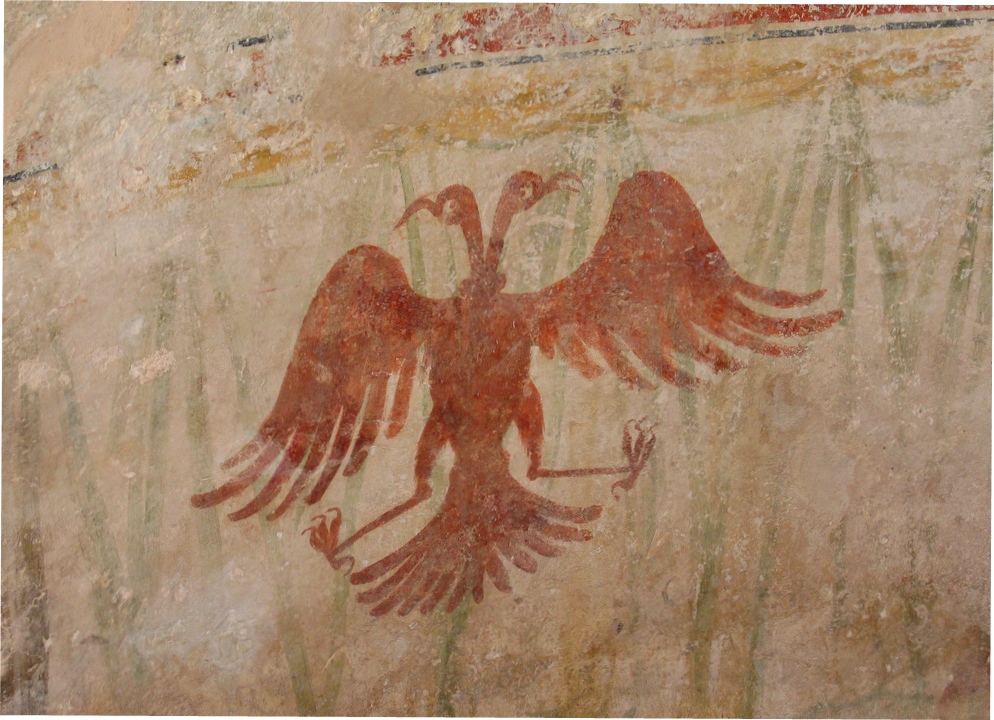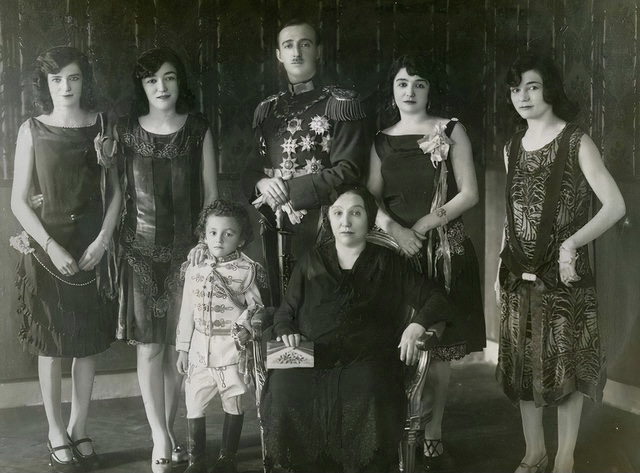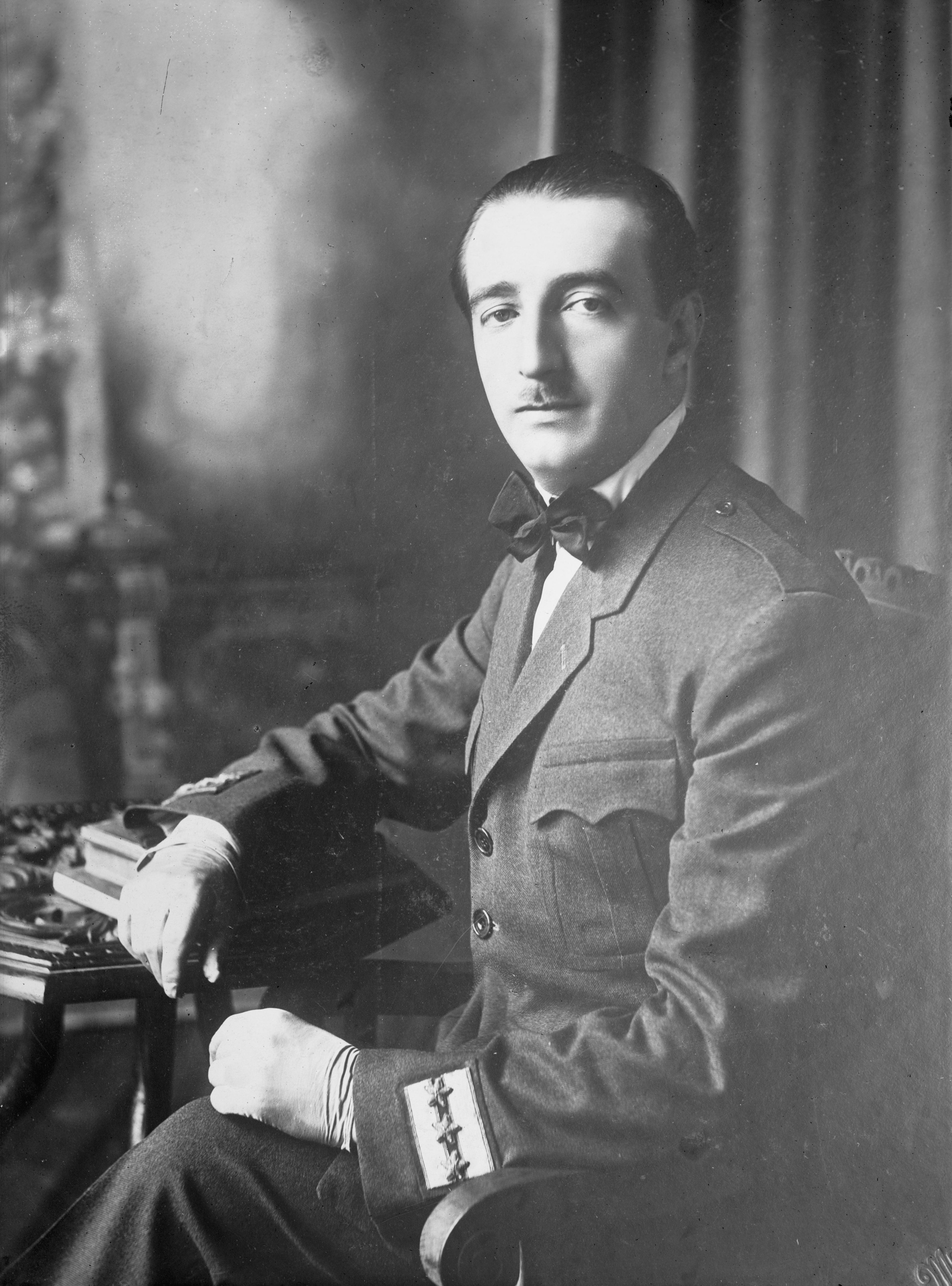|
List Of Heads Of State Of Albania
This is a list of Head of state, heads of state of Albania who have served since the Albanian Declaration of Independence, Declaration of Independence of 1912. Since the Fall of communism in Albania, collapse of the communist regime in 1991, the head of state of Albania is the President of Albania, President of the Republic ( sq, Presidenti i Republikës). The President is Indirect election, indirectly elected to a five-year term and is limited to a maximum of two terms, as specified by the Constitution of Albania, Constitution. As in most parliamentary systems, the President is now by-and-large a Figurehead, ceremonial office, with the Prime Minister of Albania, Prime Minister ''de facto'' heading the Executive (government), executive branch. Heads of State Monarchs Chairmen of the Presidium First Secretaries Presidents Acting Heads of State See also * List of Albanian monarchs * President of Albania References External links A brief history of t ... [...More Info...] [...Related Items...] OR: [Wikipedia] [Google] [Baidu] |
Head Of State
A head of state (or chief of state) is the public persona who officially embodies a state Foakes, pp. 110–11 " he head of statebeing an embodiment of the State itself or representatitve of its international persona." in its unity and legitimacy. Depending on the country's form of government and separation of powers, the head of state may be a ceremonial figurehead or concurrently the head of government and more (such as the president of the United States, who is also commander-in-chief of the United States Armed Forces). In a parliamentary system, such as the United Kingdom or India, the head of state usually has mostly ceremonial powers, with a separate head of government. However, in some parliamentary systems, like South Africa, there is an executive president that is both head of state and head of government. Likewise, in some parliamentary systems the head of state is not the head of government, but still has significant powers, for example Morocco. In contrast, ... [...More Info...] [...Related Items...] OR: [Wikipedia] [Google] [Baidu] |
Flag Of Albania (1934-1939)
The flag of Albania ( sq, Flamuri i Republikës së Shqipërisë) is a red flag with a silhouetted black double-headed eagle in the center. The red stands for bravery, strength, valour and bloodshed, while the Eagle represents the sovereign state of Albania. The flag was established as the national flag of Albania when the country gained its independence from the Ottoman Empire in 1912. Origin During John Hunyadi's campaign in Niš in 1443, Skanderbeg and a few hundred Albanians defected from the Turkish ranks; for twenty-five years he scored remarkable victories against the Ottomans. He adopted the similar Byzantine imperial flag, with the double-headed eagle and the red background, and his victories brought him the papal title ''Athleta Christi''. The eagle was used for heraldic purposes in the Middle Ages by a number of noble families in Albania and became the symbol of the Albanians. The Kastrioti's coat of arms, depicting a black double-headed eagle on a red field, became f ... [...More Info...] [...Related Items...] OR: [Wikipedia] [Google] [Baidu] |
People's Socialist Republic Of Albania
The People's Socialist Republic of Albania ( sq, Republika Popullore Socialiste e Shqipërisë, links=no) was the Marxist–Leninist one party state that existed in Albania from 1946 to 1992 (the official name of the country was the People's Republic of Albania from 1946 until 1976 and the Republic of Albania from 1991 until its dissolution in 1992). From 1944 to 1946, the state of Albania was known as the Democratic Government of Albania. During this time period, the country was ruled by Enver Hoxha and the Party of Labour of Albania. They ruled Albania by establishing a Albanian stalinist style of state administration and adhering to policies which stressed national unity and self-reliance. Travel and visa restrictions made Albania one of the most difficult countries to visit or travel from. Former President Ilir Meta called it the "North Korea of Europe" during an interview with Euronews. Being Europe's only Muslim-majority country, it declared itself the world's first a ... [...More Info...] [...Related Items...] OR: [Wikipedia] [Google] [Baidu] |
Flag Of Albania (1946-1992)
The flag of Albania ( sq, Flamuri i Republikës së Shqipërisë) is a red flag with a silhouetted black double-headed eagle in the center. The red stands for bravery, strength, valour and bloodshed, while the Eagle represents the sovereign state of Albania. The flag was established as the national flag of Albania when the country gained its independence from the Ottoman Empire in 1912. Origin During John Hunyadi, John Hunyadi's campaign in Niš in 1443, Skanderbeg and a few hundred Albanians defected from the Turkish ranks; for twenty-five years he scored remarkable victories against the Ottomans. He adopted the similar Byzantine imperial flag, with the double-headed eagle and the red background, and his victories brought him the papal title ''Athleta Christi''. The eagle was used for heraldry, heraldic purposes in the Middle Ages by a number of noble families in Albania (toponym), Albania and became the symbol of the Albanians. The Kastrioti family, Kastrioti's coat of arms, de ... [...More Info...] [...Related Items...] OR: [Wikipedia] [Google] [Baidu] |
House Of Savoy
The House of Savoy ( it, Casa Savoia) was a royal dynasty that was established in 1003 in the historical Savoy region. Through gradual expansion, the family grew in power from ruling a small Alpine county north-west of Italy to absolute rule of the Kingdom of Sicily from 1713 to 1720, when they were handed the island of Sardinia, over which they would exercise direct rule from then onward. Through its junior branch of Savoy-Carignano, the House of Savoy led the Italian unification in 1860 and ruled the Kingdom of Italy until 1946; they also briefly ruled the Kingdom of Spain in the 19th century. The Savoyard kings of Italy were Victor Emmanuel II, Umberto I, Victor Emmanuel III, and Umberto II. The last monarch reigned for a few weeks before being deposed following the institutional referendum of 1946, after which the Italian Republic was proclaimed. History The name derives from the historical region of Savoy in the Alpine region between what is now France and Italy. Over ti ... [...More Info...] [...Related Items...] OR: [Wikipedia] [Google] [Baidu] |
Vittorio Emanuele III Autograph
Vittorio is an Italian male given name which has roots from the Byzantine-Bulgarian name Victor (name), Victor. People with the given name Vittorio include: * Vittorio Emanuele, Prince of Naples, pretender to the former Kingdom of Italy * Vittorio Adorni, professional road racing cyclist * Vittorio Alfieri, dramatist and poet * Vittorio Amandola (1952–2010), Italian actor and voice actor * Vittorio De Angelis (1962–2015), Italian voice actor * Vittorio Brambilla (1937–2001) Italian Formula One racing driver * Vittorio Caprioli, actor, director and screenwriter * Vittorio Cecchi Gori (born 1942), Italian film producer and politician * Vittorio Cini (1885–1977), Italian industrialist and politician * Vittorio Cottafavi, director and screenwriter * Vittorio Gallinari, basketball player * Vittorio Gassman (1922–2000), Italian actor and director * Vittorio Giannini, neoromantic composer of operas * Vittorio Guerrieri, Italian voice actor * Vittorio Giardino, comic artist * ... [...More Info...] [...Related Items...] OR: [Wikipedia] [Google] [Baidu] |
Victor Emmanuel III Of Italy
Victor Emmanuel III (Vittorio Emanuele Ferdinando Maria Gennaro di Savoia; 11 November 1869 – 28 December 1947) was King of Italy from 29 July 1900 until his abdication on 9 May 1946. He also reigned as Emperor of Ethiopia (1936–1941) and King of the Albanians (1939–1943). During his reign of nearly 46 years, which began after the assassination of his father Umberto I, the Kingdom of Italy became involved in two world wars. His reign also encompassed the birth, rise, and fall of Italian Fascism and its regime. During the First World War, Victor Emmanuel III accepted the resignation of Prime Minister Paolo Boselli and named Vittorio Emanuele Orlando (the ''premier of victory'') in his place. Despite being on the winning side of the First World War, Italy did not get all the territories which had been promised to it in the 1915 Treaty of London; the Treaty of Versailles, ending the war, failed to give Italy its demands for Fiume and Dalmatia. This mutilated victory led ... [...More Info...] [...Related Items...] OR: [Wikipedia] [Google] [Baidu] |
Vittorio Emanuele III E Nipote
Vittorio is an Italian male given name which has roots from the Byzantine-Bulgarian name Victor. People with the given name Vittorio include: * Vittorio Emanuele, Prince of Naples, pretender to the former Kingdom of Italy * Vittorio Adorni, professional road racing cyclist * Vittorio Alfieri, dramatist and poet * Vittorio Amandola (1952–2010), Italian actor and voice actor * Vittorio De Angelis (1962–2015), Italian voice actor * Vittorio Brambilla (1937–2001) Italian Formula One racing driver * Vittorio Caprioli, actor, director and screenwriter * Vittorio Cecchi Gori (born 1942), Italian film producer and politician * Vittorio Cini (1885–1977), Italian industrialist and politician * Vittorio Cottafavi, director and screenwriter * Vittorio Gallinari, basketball player * Vittorio Gassman (1922–2000), Italian actor and director * Vittorio Giannini, neoromantic composer of operas * Vittorio Guerrieri, Italian voice actor * Vittorio Giardino, comic artist * Vittorio Gorett ... [...More Info...] [...Related Items...] OR: [Wikipedia] [Google] [Baidu] |
Italian Protectorate Of Albania (1939–1943)
The Italian protectorate of Albania, also known as the Kingdom of Albania or Greater Albania, existed as a protectorate of the Kingdom of Italy. It was practically a union between Italy and Albania, officially led by Italy's King Victor Emmanuel III and its government: Albania was led by Italian governors, after being militarily occupied by Italy, from 1939 until 1943. During this time, Albania ceased to exist as an independent country and became an autonomous part of the Italian Empire. Officials intended to make Albania part of a Greater Italy by assimilating Albanians as Italians and colonizing Albania with Italian settlers from the Italian Peninsula to transform it gradually into an Italian land. In the Treaty of London during World War I, the Triple Entente had promised central and southern Albania to Italy as a reward for fighting against the Central Powers.Nigel Thomas. Armies in the Balkans 1914–18. Osprey Publishing, 2001. Pp. 17. In June 1917, after Italian sold ... [...More Info...] [...Related Items...] OR: [Wikipedia] [Google] [Baidu] |
Flag Of Albania (1939-1943)
The flag of Albania ( sq, Flamuri i Republikës së Shqipërisë) is a red flag with a silhouetted black double-headed eagle in the center. The red stands for bravery, strength, valour and bloodshed, while the Eagle represents the sovereign state of Albania. The flag was established as the national flag of Albania when the country gained its independence from the Ottoman Empire in 1912. Origin During John Hunyadi's campaign in Niš in 1443, Skanderbeg and a few hundred Albanians defected from the Turkish ranks; for twenty-five years he scored remarkable victories against the Ottomans. He adopted the similar Byzantine imperial flag, with the double-headed eagle and the red background, and his victories brought him the papal title ''Athleta Christi''. The eagle was used for heraldic purposes in the Middle Ages by a number of noble families in Albania and became the symbol of the Albanians. The Kastrioti's coat of arms, depicting a black double-headed eagle on a red field, became f ... [...More Info...] [...Related Items...] OR: [Wikipedia] [Google] [Baidu] |
House Of Zogu
The House of Zogu, or Zogolli during Ottoman times and until 1922, is an Albanian dynasty whose roots date back to the early 20th century. The family provided the first president and the short-lived modern Albanian Kingdom with its only monarch, Zog I of Albania (1928–1939). History The dynasty was founded by Zogu Pasha, who migrated to the region of Mat in north-central Albania during the early 13th century. The most famous member of the dynasty is Zog I, who in 1928 selfproclaimed himself King of the Albanians and ruled until he was deposed by Victor Emmanuel III of Italy following the Italian invasion of 1939. Victor Emmanuel subsequently assumed the Albanian throne. With the death in exile of King Zog in 1961, he was succeeded as claimant to the throne and head of the House of Zogu by his only son Leka, Crown Prince of Albania (born 1939), who was self-proclaimed ''King of the Albanians'' by the Albanian National Assembly in exile. King Leka remained head of the house an ... [...More Info...] [...Related Items...] OR: [Wikipedia] [Google] [Baidu] |
Zogu (nënshkrim)
Zog I ( sq, Naltmadhnija e tij Zogu I, Mbreti i Shqiptarëve, ; 8 October 18959 April 1961), born Ahmed Muhtar bey Zogolli, taking the name Ahmet Zogu in 1922, was the leader of Albania from 1922 to 1939. At age 27, he first served as Albania's youngest ever prime minister (1922–1924), then as president (1925–1928), and finally as king (1928–1939). Born to a beylik family in Ottoman Albania, Zog was active in Albanian politics from a young age and fought on the side of Austria-Hungary during the First World War. He held various ministerial posts in the Albanian government before being driven into exile in June 1924, but returned later in the year with Yugoslav and White Russian military support and was subsequently elected prime minister. Zog was elected president in January 1925 and vested with dictatorial powers, with which he enacted major domestic reforms, suppressed civil liberties, and struck an alliance with Benito Mussolini's Italy. In September 1928, Albania was ... [...More Info...] [...Related Items...] OR: [Wikipedia] [Google] [Baidu] |




.jpg)

